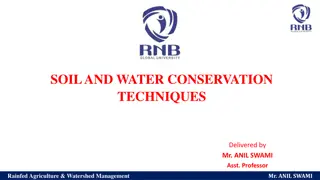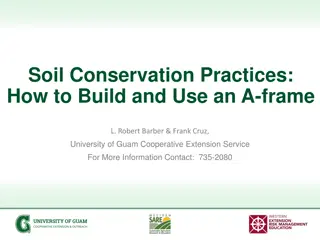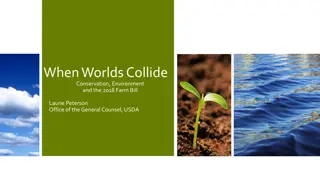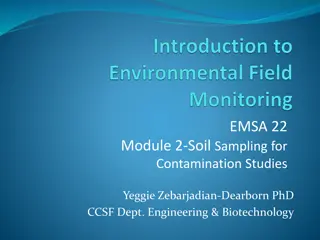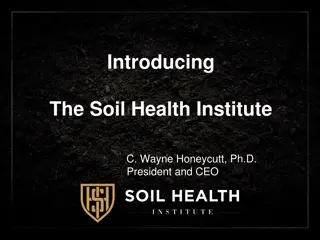Effective Methods for Soil Conservation
Methods to reduce soil erosion and promote soil conservation include terracing, contour planting, strip cropping with cover crops, alley cropping, agroforestry, windbreaks, and conservation tillage practices such as no-till and minimum tillage. These methods help in minimizing soil erosion hotspots and offer environmental benefits like reducing erosion, improving soil quality, conserving water, and providing cover for wildlife. Additionally, conservation tillage provides practical benefits like saving time and money, reducing soil compaction, and optimizing soil moisture for enhanced crop growth.
Download Presentation

Please find below an Image/Link to download the presentation.
The content on the website is provided AS IS for your information and personal use only. It may not be sold, licensed, or shared on other websites without obtaining consent from the author. Download presentation by click this link. If you encounter any issues during the download, it is possible that the publisher has removed the file from their server.
E N D
Presentation Transcript
Reduce Soil Erosion Soil conservation, some methods Terracing Contour planting Strip cropping with cover crop Alley cropping, agroforestry Windbreaks or shelterbeds Conservation-tillage farming No-till Minimum tillage Identify erosion hotspots
Solutions: Mixture of Monoculture Crops Planted in Strips on a Farm
Conservation Tillage Conservation-tillage farming: method of soil cultivation that leaves the previous year's crop residue on fields before & after planting the next crop No-till: involve planting crops directly into residue that either hasn't been tilled at all Minimum tillage: some residue has been removed, but at least 30 to 70% remains
No Till & Minimum Tillage Planting into corn residue (no till) Soybeans grown in striped rows between corn residue (minimum tillage)
Benefits of Conservation Tillage Environmental benefits Reduces soil erosion by 60%-90% from rain & wind Improvessoil and water quality by adding organic matter as crop residue decomposes Conserves water by reducingevaporation Conserves energy due to fewer tractor trips Reduces air pollution from dust and diesel Crop residue provides food and cover for wildlife
Benefits of Conservation Tillage Practical benefits Fewer trips across the fields saves time and money (lowers fuel, labor and machinery maintenance costs) and reduces soil compaction that can reduce yields Optimizes soil moisture, enhancing crop growth in dry periods or on droughty soils





